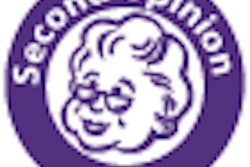June was an exciting month on many levels for molecular imaging practitioners and advocates. The annual SNM meeting in Toronto provided an abundance of groundbreaking research and served as a meeting place for the world to congregate and explore solutions to the global medical isotope shortage.
Dear Molecular Imaging Insider,
June was an exciting month on many levels for molecular imaging practitioners and advocates. The annual SNM meeting in Toronto provided an abundance of groundbreaking research and served as a meeting place for the world to congregate and explore solutions to the global medical isotope shortage.
This issue of the Molecular Imaging Insider features a study presented at the SNM conference by researchers from Harvard Medical School and Children's Hospital in Boston. Their study shows how PET outpaces MRI in localizing an epileptogenic focus. Researchers also found that concordant PET and MR images predict a greater likelihood of a child being seizure-free after surgery. Read more about this study by clicking here.
Novel hybrid imaging technologies and techniques also made headlines at SNM 2009.
Preliminary results of a new PET/MRI prototype breast imaging system, developed by researchers at Stony Brook University and the Brookhaven National Laboratory, demonstrated how the combined modalities could produce images with enough clarity to more accurately classify lesions.
In addition, Swiss researchers are working on a hybrid cardiac imaging method that combines coronary CT angiography with SPECT myocardial perfusion imaging to predict relevant coronary lesions with considerably less radiation dose and scanning time.
Also from SNM 2009, editor in chief Brian Casey reports on follow-up research to the Detection of Ischemia in Asymptomatic Diabetics (DIAD) trial. New information shows asymptomatic patients with type 2 diabetes and who have abnormal electrocardiogram (ECG) results should receive myocardial perfusion SPECT workup due to their worse prognosis compared to those with normal ECGs.
With the medical isotope issue at the forefront of the molecular imaging industry, updates on the worldwide shortage occur daily. The latest news has repair crews still trying to determine how to fix the aging nuclear reactor in Chalk River, Ontario, while the Canadian government defends its decision to scrap the Maple isotope reactor project and consider utilizing the private sector to operate its nuclear program.
With the molybdenum-99 (Mo-99) shortage having an adverse effect on the volume of imaging procedures among SNM members, contributing writer Alexandra Weber Morales provides a most informative report on what U.S. nuclear medicine physicians are doing to adapt to limited Mo-99 supplies.
In the coming days and weeks, the Molecular Imaging Community will keep close watch on the isotope issue and report on more research from SNM 2009. Enjoy the week and, for our subscribers in the U.S., have a terrific Fourth of July holiday weekend.



















